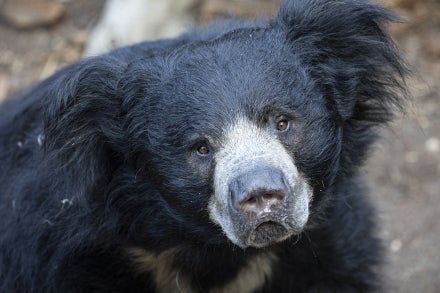
Does your dog hide under the bed during a thunderstorm? Does your cat seem extra clingy when something feels “off”? It turns out these kinds of behaviors aren’t unique to pets. Wildlife across the globe display fascinating and often mysterious responses to natural phenomena. Whether it’s an earthquake, a monsoon, or even a wildfire, animals seem to have an uncanny ability to sense changes in their environment—often before humans even realize what’s happening.
Shake, Rattle, and Roll
When it comes to earthquakes, this is especially true. Animals seem to feel them long before the ground starts to shake, whether it’s neighborhood dogs barking or flocks of birds suddenly taking flight. One of the most well-documented examples of earthquake-related animal behavior involves elephants. Earth’s largest land animal has the extraordinary ability to “hear” through their foot pads in what’s known as seismic communication. They can register one another’s calls up to five miles away by detecting sounds and vibrations that travel through the ground. These low-frequency sounds travel further than higher pitches and are far below our ability to hear. This unique adaptation is especially vital for survival, enabling elephants to communicate over long distances or detect potential threats such as predators or environmental changes, including earthquakes they experience across Asian and African tropical forests and Africa's savannas.

Elephants at the Safari Park circled and trumpeted when Zuli was born in 2018, expressing a natural behavior.
On April 14, 2025, a 5.2 magnitude earthquake shook Southern California. In the video above, you can see the elephants at the San Diego Zoo Safari Park promptly come together to form what is known as an “alert circle”. The herd gathered around, facing outward, with the young ones protected in the middle as they assessed the changes to their environment and looked for any potential danger. As Mindy Albright, curator of mammals at the Safari Park said, “They knew something was not right, and they came together and they were appropriate in their response. I think it’s something that we can all relate to. It was kind of scary and the first thing you want to do is check on your family members to make sure everybody’s OK—and that’s exactly what they did.” This behavior as demonstrated by Ndlula, Zuli, Mkhaya, Umngani, and Khosi is a natural response to big moments, whether to protect against perceived threats or even to welcome a newborn. In fact, when Zuli was born in 2018, the herd did something similar while trumpeting to celebrate his arrival.

Male Indian bullfrogs turn from this brownish-green to a stunning electric yellow with bright blue vocal sacs during the mating season, which is triggered by rain.
Rain, Rain, Don’t Go Away?
Monsoons bring not just torrential rain but also significant behavioral adaptations in wildlife. Amphibians tend to thrive during the monsoon season. Frogs and toads emerge in abundance, taking advantage of the time to breed and lay their eggs in newly formed pools of water. Male Indian bullfrogs go through color changes during this time, turning from a dull greenish brown to a vibrant yellow with bright blue vocal sacs in order to attract mates.
Unexpectedly, termites also do well during rainy seasons due to the ideal combination of moisture and warmth. These conditions trigger their mating season, during which they emerge and attempt to start new colonies with thousands of new offspring. With the softer soil, it’s easier for termites to build and extend those colonies underground. Additionally, the increased humidity helps these tiny wood-eaters maintain their delicate exoskeletons, which are prone to desiccation in drier climates. The longer they’re able to safely spend outside, the more time they can spend searching for suitable nest sites.

Herd animals like elk and deer may stick together to ride out rough weather.
Sparking Survival
Much like your dog quivering during a thunderstorm, many animals react to lightning and thunder due to the loud, startling noises and sudden flashes. Herd animals like deer often seek shelter or huddle together for safety, while smaller mammals like foxes and raccoons tend to burrow deeply into their dens or find other shelter.
While many species may also pursue safety in dense tree canopies or rock crevices, there are unfortunate instances where large groups of wildlife, including herds of cattle and flocks of birds on open water, can be struck by lightning when sitting close together.

Birds of prey like black kites are known to take advantage of wildfires to find their next meal.
Rising From the Ashes
Sometimes caused by lightning, wildfires are an integral part of many ecosystems, serving as a natural mechanism for renewal and balance. Periodic natural fires help clear out dead vegetation, recycle nutrients back into the soil, and create space for new growth. For some plant species, fire even plays a critical role in their life cycle, with certain seeds requiring smoke, and/or the intense heat of flames to germinate. By maintaining biodiversity and preventing the overaccumulation of fuel, wildfires contribute to the long-term health of forests and grasslands. However, the increasing intensity and frequency of wildfires in recent years have disrupted this delicate balance, posing significant challenges to wildlife and their habitats.
When wildfires come roaring in, most animals instinctively flee from approaching flames, with larger species like deer, bears, and coyotes often running to escape and sometimes seeking shelter in residential areas. Smaller animals, like squirrels and rodents, tend to burrow underground or seek other shelter until the danger has passed.
Bears, racoons, and birds of prey, particularly raptors like hawks and kites, also benefit from this natural cycle, to the detriment of other wildlife in the ecosystem: they may follow fires to use them as hunting opportunities, taking advantage of fleeing rodents and smaller creatures as they swoop in for an easy meal. In Australia, black kites have even been observed—seemingly intentionally—spreading small fires by picking up burning sticks and dropping them into unburnt areas to flush out prey! This is why they’re also known as “firehawks”.

Birds may take off when they sense danger or a sudden change to their environment.
Wild Wisdom
Nature never ceases to amaze us, not only in its beauty but also in the way every species, big and small, finds ways to adapt and survive. These fascinating examples also serve as a reminder of the intricate relationship animals have with their environment—and underscore the importance of preserving natural habitats. When wildlife has access to the space and resources they need, they can adapt and survive even in the face of nature’s greatest challenges. As an ally for wildlife, you make those efforts possible through our eight global Conservation Hubs.
Photo credits: Top PhPhoto credits: top Image Photo Credit: guanos/iStock/Getty Images Plus; Indian bullfrog mihir_joshi/iStock/Getty Images Plus; elk milehightraveler/iStock/Getty Images Plus; black kite mauribo/iStock/Getty Images Plus; flock serkanmutan/iStock/Getty Images Plus




